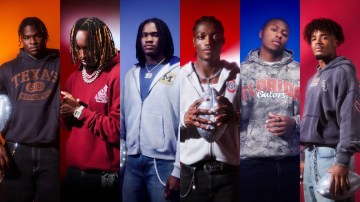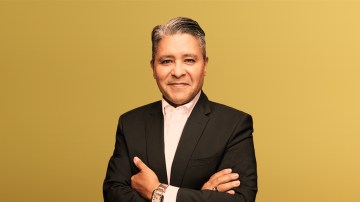Fashion brands have started adding vending machines to their sales channel mix, which has been good for stirring up PR. Though many have proved nothing more than marketing gimmicks, some have emerged as valuable retail outlets. The difference: The machine’s location and the styles it houses.
In mid December, fine jewelry designer Marla Aaron debuted her first vending machine, at New York’s Brooklyn Museum. It features seven of her signature sterling silver and gold chains and lock pendants, ranging in price from $100-$1,500.
So far, she said, it’s served some customers well, including one shopper who found himself in a bind on Christmas Eve. “All of the jewelry stores had closed, so he hit the museum after a desperate search on our website.”
Given their accessibility and affordability, vending machines play into retail’s current direction: Like buzzy pop-ups, they grant digitally native brands an opportunity to sell in a physical space, minus a long-term lease. They also save brands the cost of labor. What’s more, they align with the industry’s shift to automation, which spans from the design process to the sales floor. (In late 2016, Rebecca Minkoff teased the store of the future, launching self-checkout at its Soho location.)
To date, Aaron said sales have been mostly in the $200-500 range — but noted the main goal of the machine is a way to offer customers an alternative brand experience.
“It feels risky to not do these types of things,” she said. “Today, you need to be everywhere.” (Prior, Marla Aaron styles were sold exclusively on the brand website and in small retailers in key local markets.)
The machine, which took two years to develop, features a touch screen that provides a video about the brand and descriptions of each product. With the swipe of a credit card, shoppers can walk away with a luxury piece, in packaging befitting an upscale retailer.
“It was more about marketing [than sales],” she said. “The jewelry industry needs to evolve, and this was an opportunity to introduce something new, to think totally outside of the box.”
 A Uniqlo To Go vending machine (image via businessinsider.com)
A Uniqlo To Go vending machine (image via businessinsider.com)
In August, two years after pulling back on a grand expansion plan, Uniqlo began rolling out Uniqlo To Go vending machines in 10 airports and malls in the U.S.. (“We are strategically placing machines where customers know us — LA, NYC and San Francisco — and also in new markets, including Las Vegas and Texas,” said Marisol Tamaro, Uniqlo U.S.’s head of marketing.) Each sells a limited assortment of popular Uniqlo pieces, including lightweight down jackets and Heattech shirts, dispensed in small boxes. According to Tamaro, the styles “continually perform well.” To meet customer demand, Uniqlo will stock the machines with more ultra-light down vests as spring approaches.
Melissa Gonzalez, founder and CEO of retail consulting firm The Lionesque Group, said the company has the right idea.
“The design of the machine itself, the location of the machine and the products curated — both their price points and their relevance to impulse or last-minute needs — impact the success of vending machines, as much as the technology,” she said. “Airports and hotels make good locations.”
Beauty brands have been testing automated kiosks in airport terminals for years. Sephora kicked off the trend in 2009, selling essentials from brands including Dior and Philosophy. Between 2013 and 2015, brands including Benefit, Essie and The Honest Company followed up with their own versions. Aside from beauty, Best Buy has housed kiosks in airports since 2008, allowing travelers to pick up small electronics, like headphones and chargers.
And brands have worked with hotels to supplement gift shops with vending machines: In 2010, surf brand Quiksilver teamed with The Standard Hotel to set up poolside machines holding its bikinis, board shorts and sunglasses. Likewise, in Australia, Cotton On and Havaianas have been successfully selling flip-flops in vending machines positioned near beaches.
Outside of affordable, emergency products, vending machines have worked well for selling in-demand goods: In 2016, Snapchat sold its $130 Spectacles in “Snapbot” vending machines, which it rolled out in mystery locations, mimicking exclusive sneaker drops.
 Vending machines in Japan (image via money.cnn.com)
Vending machines in Japan (image via money.cnn.com)
Aaron said the idea for her fine-jewelry vending machine came to her while she was traveling in Japan, where vending machines “sell everything and are everywhere, well outside of the parameters American shoppers are used to.”
According to the Japan Vending Machine Manufacturers Association, Japan has the highest density of vending machines worldwide, with over 5 million, or one per every 23 people. Their annual sales total more than $60 billion.
The concept is slowly catching on worldwide. Last month, Sole DXB, a three-day festival in Dubai celebrating global street culture that combines a direct-to-consumer fashion trade show, was peppered with vending machines, “an iconic symbol of modern-day Japan.” They were meant to give attendees a taste of the future buying habits of the next generation of shoppers.
Gonzalez said we can expect the increased use of vending machines among fashion brands and shoppers, thanks to advancements in technology. The machines are getting more innovative and sophisticated, she said, with some now incorporating retina recognition, cashless payments and online integration.
Aaron echoed the sentiment, adding: “It’s the future of retail.”



